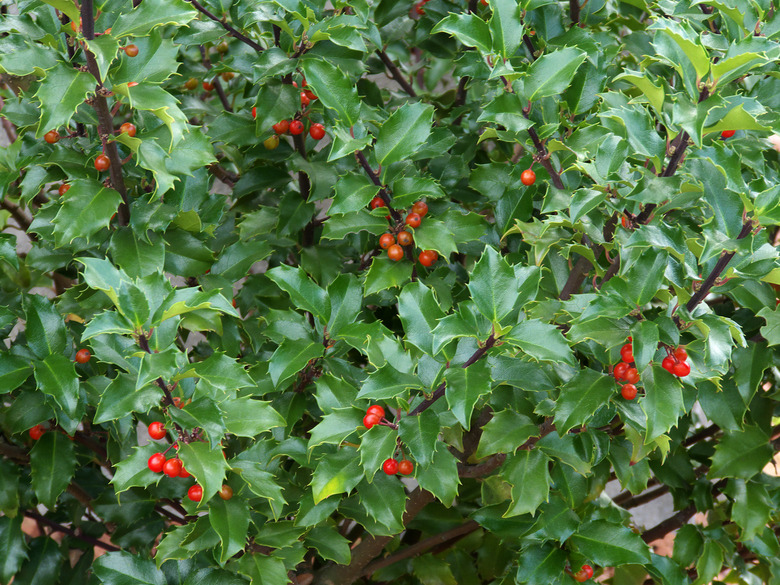When Is The Best Time To Transplant A Holly Tree?
We may receive a commission on purchases made from links.
American holly (Ilex opaca), a broadleaf evergreen that has leaves, not needles, grows as an upright, pyramidal tree in U.S. Department of Agriculture plant hardiness zones 5 through 9. If you change your mind about where you want it, you can transplant a holly tree successfully – but it's important to move it at the right time.
Choosing a Time to Transplant a Holly Tree
Choosing a Time to Transplant a Holly Tree
You may want to move the holly for any number of reasons – you might find that it's too close to a building or doesn't work well with other plantings. It's best to move a tree either in fall or early spring. Transplanting in early fall, when the soil is still warm, gives the tree time to grow new roots before winter arrives and it becomes dormant. You can also move a tree successfully in early spring, a time that also allows for new root growth before summer heat stresses the tree. Don't try to transplant a holly tree during winter. Because evergreens don't drop their leaves, they can lose water through their foliage during cold weather, a process called transpiration, but their roots can't take up water well in winter.
Encouraging Feeder Roots
Encouraging Feeder Roots
If you're not in a hurry to transplant the holly tree, you can prepare the tree for the move by pruning its roots its roots several months before you move it, encouraging the tree to grow new feeder roots that reduce transplant shock after the holly is moved. With this method, prune roots in early fall and transplant the following spring, after new roots have had a chance to grow. Push a spade 12 to 15 inches deep into the soil, moving in a circle around the tree. If it's a large tree, make a circular trench 12 inches deep and wide around the tree, then backfill it with topsoil. In either case, the diameter of the circle should be 6 inches for every 1 foot of the tree's spread at its widest point – for example, 36 inches for a 6-foot-wide tree.
Transplanting a Holly Tree
Transplanting a Holly Tree
When you're ready to transplant the holly tree, pick a time when the soil is workable. It should be moist but not wet, and squeezing a handful of soil shouldn't produce dripping water. Water the tree a day or two before transplanting, then carefully dig the root ball up from its current site, wrapping it in natural burlap that you secure with twine around the ball and trunk. Prepare the new hole, ensuring it's no deeper than the depth at which the tree is currently growing and is at least twice the diameter of the tree's root ball. Lift the tree by the root ball, not the trunk, and move it into the new hole, folding back the upper part of the burlap once it's in place.
Following Up on the Transplant
Following Up on the Transplant
After settling the holly tree into its new hole, backfill with soil but don't add fertilizer because it might burn new roots as they start growing. Tamp the soil down and water the tree, soaking the area well to ensure no air pockets remain around the roots. Mulch the tree with a 2- or 3-inch layer of organic mulch, such as shredded bark or straw, to help retain soil moisture, but keep it back a few inches from the trunk to prevent fungal problems. For the next 12 months, regularly check soil moisture under the mulch, probing 2 or 3 inches below the surface, and soak the tree well whenever the soil feels dry.
